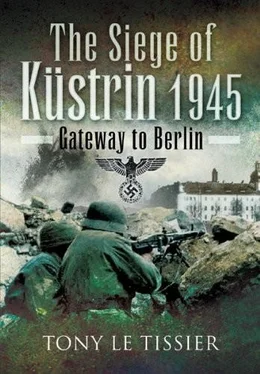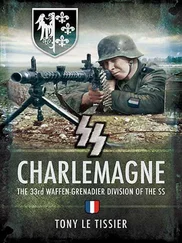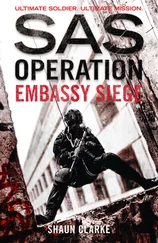At the end of January 1945 there was a rush to load everything on railway wagons. The over-hasty securing of the guns resulted in one case of the gun barrel coming loose and starting to swing, hitting something like five wooden telegraph poles alongside the track. Only after sending a written message forward by a level crossing keeper were we able to stop the train.
The order to stop came beyond Stargard. The train was diverted under light snow showers and in full darkness. On the 30th January we reached our new goal, Küstrin-Neustadt, and had to unload immediately.
The guns were allocated to various positions within the town area. The first took up position in the Neustadt, immediately north of the extension of Plantagenstrasse. This was shortly behind the entrance to Anger Strasse, where Plantagenstrasse turns 90 degrees south-west as Strasse 39 towards the sewage farm and from there 90 degrees north-west to Strasse 42 and the Cellulose Factory. The second gun must have been positioned in the Neustadt between the goods station and the Engineer Barracks. The third gun went across to the Altstadt and was positioned on the Island north of the Mittelhöfel between Lunette B and the weir of the Vorflut Canal. Its forward observer sat on the southern point of the Mittelhöfel not far from the point where the Vorflut Canal and Oder separate. All three guns had wide-ranging fields of fire. The fourth gun was unserviceable after the railway journey.
I moved into the Cellulose Factory with the battery headquarters. Within a short time I was telephonist on a 20-plug switchboard, runner and cable-layer, which entailed maintaining communications to the forward observer.
I can only describe the factory premises sketchily and with some reservations. It formed a rough rectangle next to the Warthe. Its tall chimneystack was a well-known landmark. The only access was opposite the Warthe. Coming along the river from the direction of the Plantage, as one approached the Cellulose Factory one passed two housing blocks on the left-hand side of the road, the first on the premises of a petroleum company and the second already in the Cellulose Factory complex. A wall about 2 metres high began here separating the factory from the road. Here too was the main entrance with the factory gate. Parallel to the road was a long extended building in which I sat as telephonist at my switchboard. Parallel to this was part of the factory yard, then came a hut and behind, parallel to the Warthe, the big factory building. Another part of the factory yard stretched beyond the eastern gable of the already mentioned building on the access road. Between the Cellulose Factory and the neighbouring ground I can remember a drainage ditch and an open pipeline running towards the Warthe, but I cannot recall the exact details. A hut stood to the right facing across the end of the road. Last used to accommodate prisoners of war, the hut now stood empty, as the prisoners had been marched away. In the short time we were there we saw no strangers, either soldiers or civilians, apart from the refugees on the access road. [5]
Other reinforcements arrived in the form of Panther tank turrets with 75mm guns and their crews. The German forces were struggling to cope with an acute shortage of fuel for their tanks, so the idea had arisen of using turrets on prefabricated wooden frames sunk into the earth to reinforce defensive positions. Officer Cadet Corporal Hans Kirchhof reported:
We were Fortress Gun-Turret Company 12/11 and together with other companies were dispatched from Fallingbostel to the Weichselbogen, Bromberg-Thorn-Graudenz area. Our company consisted of three platoons each of four turrets, each turret having a crew of five men. Our train was stopped at Vietz, as our destinations were no longer attainable with the Russians already operating in these areas, and we were then detailed, a company of twelve turrets each, to Frankfurt, Küstrin and Stettin.
Tank turrets of the Panther series were to be fitted in earthen bunkers with wooden frames and linings previously prepared by the Organisation Todt. The earthen bunkers, however, had first to be built.
One of the turrets had slid off its sledge during the move and had been so badly damaged that it was no longer usable. The remaining eleven turrets went to their allotted positions around Küstrin but even before they could be installed eight fell into the hands of the Russians.
Only three turrets went into action. One was built south-east of the Kietz Gate at the junction of the Chaussees to Göritz and Sonnenburg right on the Oder dyke. The second turret was destined for the Island, between the Artillery Barracks and the road bridge over the Vorflut Canal. The main task of both turrets was to stop enemy tanks that had broken through. I never saw the third turret, so cannot give its exact location, but I think it must have been in the north of the Altstadt.
Following the loss of so many Panther turrets even before going into action, we later received two German 37mm antitank guns and a captured Russian 45mm anti-tank gun. [6]
Another new arrival was Officer Cadet Alfred Kraus:
Having been born in 1926, I was conscripted into Infantry Regiment 29 at Züllichau on the 23rd May 1944. After 14 days of basic training, we were sent to Denmark, from where I returned in November to join an officer-cadet company in Küstrin, where my field post address was ‘Officer-Cadet Company Küstrin, Stülpnagel Barracks’, counterstamped with ‘Panzergrenadier Replacement Battalion 50, HQ Company’.
On the 29th January 1945 runners called us back from a night exercise to our barrack huts in the Stülpnagel Barracks. Next day I received a visit from my mother, who returned to Berlin that night. As we were not allowed to leave the barrack grounds, I could only escort her to the barrack gate. This was a farewell forever, for both she and my father were killed in an air raid on Berlin in April 1945.
If I remember correctly, on the morning of the 31st January we moved to a country road south of Reichsstrasse 1 and northwest of the Warnick position. The east side of the road was lined with tall poplars. We had to dig a hole for a tank behind one of the trees with our field spades. As the ground was frozen rock hard, we could not get down deeper than 10 centimetres. Our platoon and company commanders were not with us. Towards noon a Russian officer, whose battalion was fighting on the German side, appeared with an interpreter and threatened to have us shot if we did not complete our task. When he checked us later, he found that none of us had done so.
For hours disorderly groups of soldiers were streaming along the nearby Reichsstrasse 1 from Landsberg towards Küstrin. They said we were crazy waiting to take on the Russians on open fields with only 1898 carbines and machine guns. That evening we heard that the Russians had forced their way into that part of Küstrin on the right bank of the Warthe. [7]
Fifteen-year-old Hitler Youth Hans Dalbkermeyer and his fellow schoolboy Manni Roeder eventually arrived in Küstrin early that morning:
Duty-bound we reported to the collecting point in one of the two barracks in the Neustadt. Which one it was I can no longer recall. I remember, however, an Army officer taking us in a Volkswagen Jeep with a great 180 degree skid in the snow to a canteen in the Potato Meal Factory in the Neustadt. As we were the first from Birnbaum, we were to wait here for our comrades and orders. For once we felt safe. It was heated and there was food to eat. The whole building had been organised as a reception centre for members of the Wehrmacht and other soldiers. As part of the ‘full pension’ was naturally included the Führer’s speech on the 12th anniversary of his assumption of power on the 30th January 1933.
We both listened reverently, convinced we must give everything asked of us by the Führer and Fatherland. As the only youngsters among the many soldiers we remained exactly like the others after the speech, only our thoughts following a different path. I still believed in final victory, which for me had never been in question. [8]
Читать дальше












